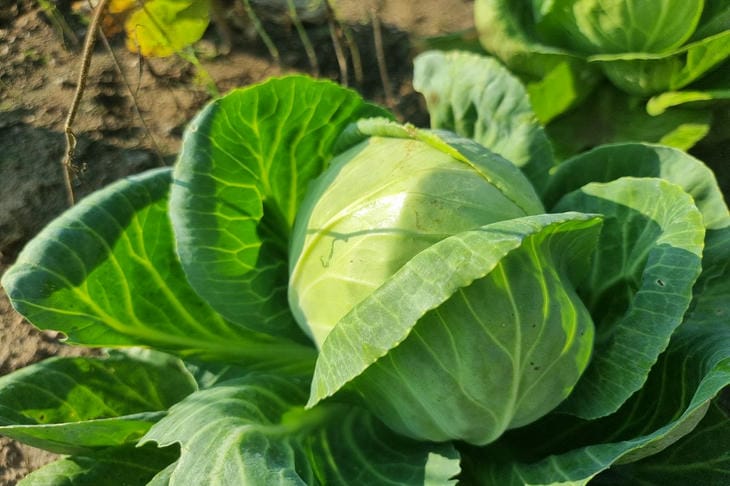Your neighbors are already cutting salads from their strong heads of cabbage, but your cabbage is barely alive, the leaves are wilted, and the heads of cabbage have not yet formed?
Chances are you made one of three fatal mistakes during the landing phase, and it cost you dearly, both literally and figuratively.
Let's take a closer look at each mistake so that next season your harvest will be the envy of everyone.

They hurried and planted it in the cold ground
The first and most common mistake is planting seedlings in unheated soil. If the soil temperature is below +10°C, the cabbage roots develop slowly, the plant does not receive enough nutrition and begins to wither.
Scientists from Cornell University conducted research and proved that cold soil slows down the growth of cabbage because the root system cannot absorb nutrients normally.
Imagine: you plant seedlings in early May, and the ground is still icy from the night frosts. As a result, the heads of cabbage are small, the leaves turn yellow, and all the work goes down the drain.
How to avoid? Use a soil thermometer — it’s inexpensive and will save your harvest. Wait until the soil has warmed up steadily to +10–12°C.
In central Russia this is usually mid-May, but in the northern regions it may be the beginning of June.
If you really want to plant earlier, cover the beds with agrofibre or make warm beds with organic matter - humus and compost give off heat, helping the soil to warm up.
Cramped space in the garden bed
The second problem is too dense planting. If you plant seedlings closer than 40 cm from each other, the plants begin to fight for light, water and nutrition.
As a result, the heads of cabbage grow small, loose, and sometimes do not form at all.
Cabbage is a demanding crop, it needs space. For example, for late varieties such as "Amager" or "Moscow late", the distance between plants should be at least 50-60 cm.
How to fix? Before planting, mark the bed with a rope and pegs. For early varieties, a 40x40 cm pattern is sufficient, for mid-season varieties - 50x50 cm, and for late varieties - up to 70x70 cm.
Don't skimp on space: it's better to plant less but get large and dense heads of cabbage than many weak plants.
And the freed up space can be filled with early-ripening greens, such as radishes or lettuce - they will have time to grow while the cabbage is gaining strength.
Acidic soil
The third mistake is unsuitable soil acidity
Cabbage prefers neutral or slightly acidic soil with a pH of 6.5–7. If the soil is acidic (pH below 6), the plant becomes vulnerable to diseases, especially clubroot, a fungal disease that attacks the roots and kills the crop.
An acidic environment blocks the absorption of calcium and magnesium, causing the leaves to become deformed and the heads of cabbage to not gain weight.
What to do? Check the acidity of the soil using litmus strips or a simple folk method: take a handful of soil, add a little vinegar - if it hisses, the soil is alkaline; if there is no reaction, it is probably acidic.
For accuracy, it is better to buy a pH meter. If the soil is acidic, add lime or dolomite flour (200-300 g per 1 m²) in the fall or a couple of weeks before planting.
This will not only deacidify the soil, but also enrich it with calcium, which cabbage loves.
Additional tips for success
- Selecting a variety : Choose a variety that suits your climate. For a short summer, early varieties "Iyunskaya" or "Transfer" are good, while late varieties "Zimovka" or "Kolobok" are good for storage.
- Preparing seedlings : Before planting, harden them for 5-7 days on the balcony or in a greenhouse so that they get used to the street.
- Mulch : Cover the bed with straw or grass clippings to retain moisture and heat.
Correct these three mistakes, give the cabbage warmth, space and the right soil, and it will surprise you with tight, juicy heads of cabbage that you won’t be ashamed to serve on the table or send to the cellar for the winter.








